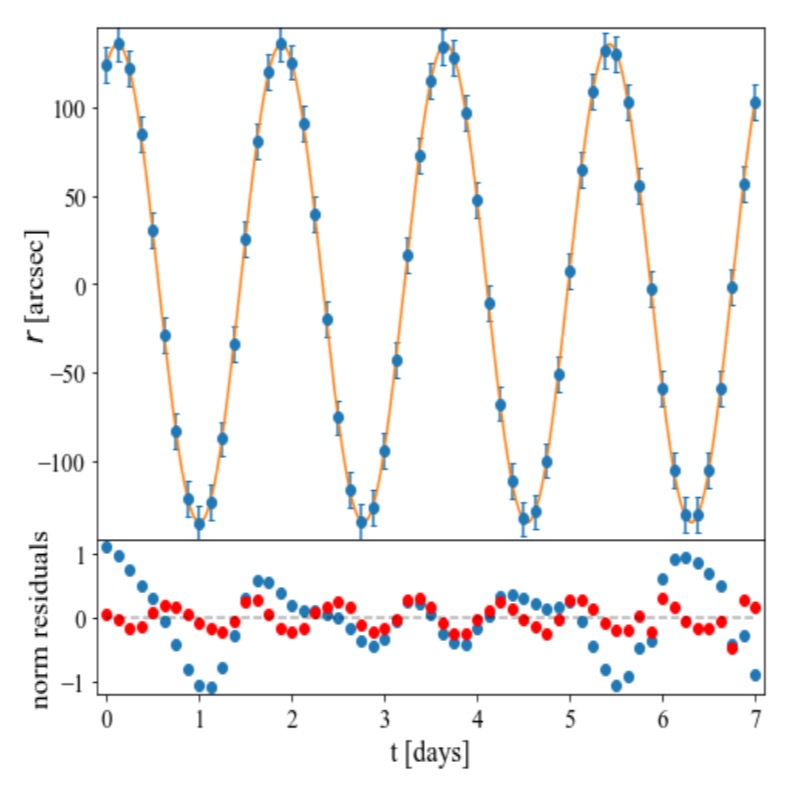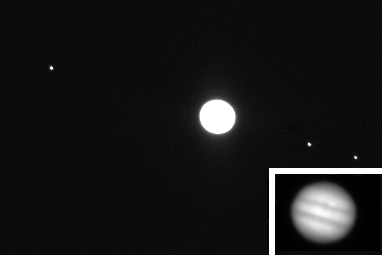 |
Department of Physics | AstroLab |
Moons of Jupiter
Jupiter is the largest planet in the solar system. It has a large number of satellites. The largest is Ganymede which is about three-quarters the size of Mars. Ganymede orbits Jupiter in a period of about 7 days. Other large satellites are Io, Europa and Callisto. These orbit Jupiter with periods ranging from 2 to 16 days.
The goal of the project is to obtain a series of images of Jupiter and its satellites so that the orbital periods of as many of the satellites as possible can be determined. How well can these periods be determined from the data obtained? What is the evidence for orbital resonances? Can deconvolution methods be developed to identify fainter moons? Software is available to aid the identification of the satellites. As well as the four bright Galilean satellites, measurements should also be made of the fainter satellites such as Himalia.
An example of the type of observations required is given below.
|
|||
| This image is a 0.11-second exposure of Jupiter taken with the 12-inch telescope. The inset image in the lower right hand corner is a 2x zoomed subimage of Jupiter. |
By taking a series of such images the
relative position of the moons, and the orbital parameters and their uncertainites can be determined.
Shown below are the RA/Dec results achieved for Ganymede (by Astrolab student Thai), with a sinuosodial fit to the position.

All of the moons and their orbital positions can be plotted (and fitted) in two- and then three-dimensions. The plot below shows the results for all moons. In this fiure, Jupiter is at the center, and the orbits of the four major moons are shown, The orbits are colour coded by time.

Project Details Project References
| Back to the AstroLab Home Page | jrl | 2013-Dec-22 23:30:53 UTC |
